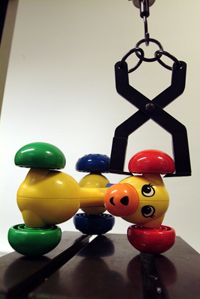Lego Testing and Packaging
If you've bought a Lego set -- whether it's a box of assorted bricks or a set meant for building something specific -- you've probably noticed that the box includes several bags of bricks rather than a large pile of loose elements. These bags are part of the automated packaging process, and they help make sure that the right pieces go into each box.

During the packaging process, bins open and close automatically, dropping precise numbers of bricks into each polypropylene bag. A machine weighs these bags to make sure their contents are correct. If a specific bag's weight is incorrect, an operator can replace that bag, rather than having to discard an entire set.
Advertisement

At the end of the process, packaging operators fold the boxes, add any necessary pieces and make sure that the machines haven't made any mistakes. The sealed boxes are stored and shipped around the world -- the process uses between 400,000 and 500,000 cardboard boxes per year.
Quality assurance testers also perform numerous inspections and tests on Lego elements. Machines perform drop, torque, tension, compression, bite and impact tests to make sure the toys are sturdy and safe. Technicians use a measuring beaker to determine whether pieces could cause a choking hazard for small children. For every million Lego elements, about eighteen, or 0.00002 percent, fail to pass the tests.
Much of the manufacturing process takes place in Klando, Czech Republic and Billund, Denmark. All in all, Lego factories produce 33,000 bricks every minute, for a total of 16 billion bricks every year. The manufacturing facilities can make 3,000 different types of elements, including 300 million tires, and these pieces go into 37,000 Lego sets every hour.
In the next section, we'll look at what you can do with all those finished bricks.
